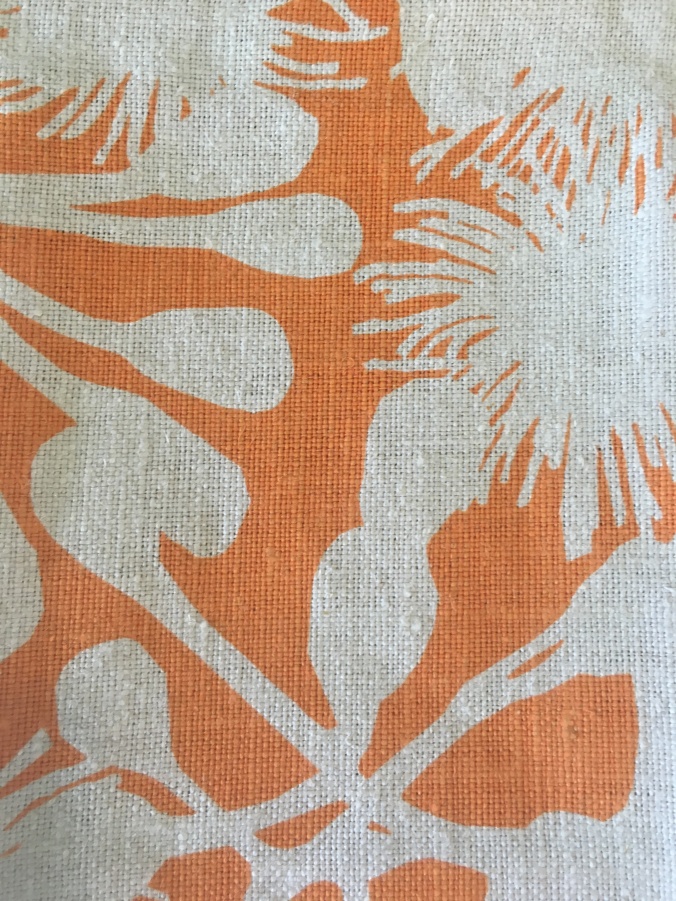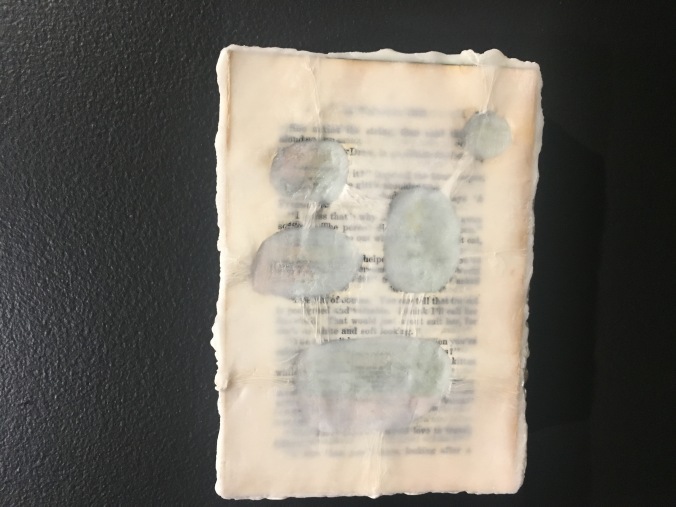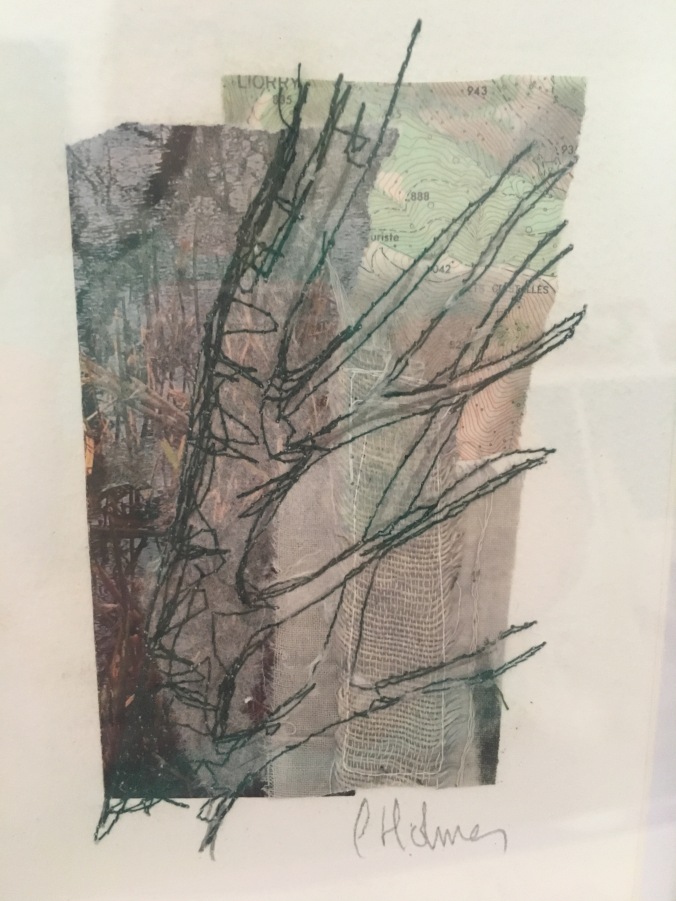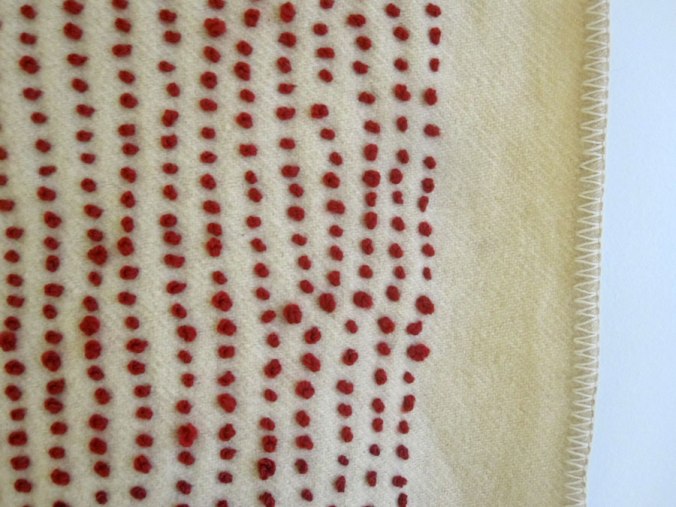Before undertaking Project 1 Part 5 I am reviewing my Tutor’s Formative Feedback for Assignments 1,2, and 3 so that I can build on this material together with other research and the recent feedback for Assignment 4.
My new notes below are based on my rereading and further reflecting on selected areas on my Tutor’s Formative Feedback on Assignment One resulting in what I think is important to me now. I have only areas of the feedback that I feel I still should be developing further or need to reflect on further to make sure I have improved.
Assignment One
Demonstration of Technical and visual skills, quality of Outcome, Demonstration of Creativity
- a thorough exploration by drawing and redrawing an object helps to find shapes, forms and textures to inspire me
- collage – good to add
- responded to Research material and used further e.g. Rosanna Wells
TO CONSIDER
Have I looked hard at other practitioners work and fed that into my own practice?
ACTION REQUIRED
Given my work is on a Blog I need to print out my Research material and put it in a folder to make sure I am actually remembering to write material up. I suspect not. I read about textile artists and view textiles every day on websites, Instagram, Facebook, SAQA (I am a member), magazines (I subscribe to Selvedge, Upper case I buy when I can find it, Embroidery (UK), digital copy of Surface Design(USA). Need to analyse add my own thoughts and ideas about the work selected by me for documentation e.g. materials, techniques, colour palette and composition. This will help me to develop my own ideas and style.
Drawing – Tutor comments Assign 1
- Drawing – practice, practice, practice – keep drawing materials loose by not holding the pencil/pen too tightly
- try holding the pencil/pen in different places to achieve different marks
- don’t worry if drawing does not appear to represent the object drawn. Each drawing will be an improvement on the next
- draw regularly in range of mediums also A3 and A2
- use a range of surfaces to draw onto and use different thicknesses of paper
- do close ups of work on Blog
- consider what has the artist done well, what have they achieved e.g. materials, colours, composition
TO CONSIDER/DO
Make sure drawing with a range of mediums – needs more work
Recommended Reading and my Update
Steal like an Artist (have a copy now have looked through – reread)
Weareoca – ‘So what is Research'(printed out and read but need to reread)
Slow Stitch – Claire Wellesley-Smith ( have a copy now and have read I love this book)
Mark Making in Textile Art – Helen Parrott (have copy now and have read)
Drawn to Stitch – Gwen Hedley (had a copy before commenced course have read )
Assignment Two
Context, reflective thinking, critical thinking, analysis
Learning Log
Include photographs of all pages of my sketchbook/workbook.
Include photographs of drawing work.
Include images of work in progress.
Research
Include more general research material – Selvedge, Crafts, Galleries etc
Demonstration of technical and Visual skills, Quality of Outcome, Demonstration of Creativity
Part 2 Surface and Stitch
Continue to explore new materials including those not mentioned in my course material.
Drawing
Use more watercolours, water-soluble crayons and inks
Use Quirky tools e.g. long twigs, feathers
Use my analytical skills to make judgements about my drawing, giving myself constructive feedback on how to continue my development.
Book
Kyra Cane ‘Making and Drawing’ – have a copy reading
Assignment Three
Context, reflective thinking, critical thinking, analysis
Learning Log
Take the work further be more adventurous in my creative practice.
Develop language that expresses what I see and how I feel about the work I make. Think in terms of colour balance, scales, tones, placement, composition, texture, surface etc. Explore how well things work together and what you can develop also have links to my research material e.g. a technique or colour palette by someone else
Research
Why was I attracted to a particular piece of work and how can I use this in my own work?
Reading
Critical Thinking Skills by Stella Cottrell (well covered by me in later work)


 I thought this information was valuable as it gives insight into how Julie works. It reinforces to me the need to carry the small sketchbook everywhere and to make sketches. I tend to use my iPhone camera to record items or scenes that interest me but need to get more into the habit of drawing too.
I thought this information was valuable as it gives insight into how Julie works. It reinforces to me the need to carry the small sketchbook everywhere and to make sketches. I tend to use my iPhone camera to record items or scenes that interest me but need to get more into the habit of drawing too.

 I found the work interesting but perhaps a little repetitive. The wax was applied thickly as you can see from the last photo and I would have preferred a thinner coating so that I could see more of the bottom layers.
I found the work interesting but perhaps a little repetitive. The wax was applied thickly as you can see from the last photo and I would have preferred a thinner coating so that I could see more of the bottom layers.
 The subject of the piece attracted me first I am inspired and attracted to trees as subjects for textile work. It is so interesting to see a small piece like this up front. There is a mixture of paper and fabric for the background. The paper includes a contour map segment. Scrim is also used along with fine cotton or silk. This background is all very subtle and the combination of colours is well matched with the pale green up in the right hand corner adding interest. This was a lesson for me as I like working in collage but mine have been bright and the pieces more regular and the results have not always been successful. So much detail when you really look at the combinations of background materials and thought process in Cas’s piece.
The subject of the piece attracted me first I am inspired and attracted to trees as subjects for textile work. It is so interesting to see a small piece like this up front. There is a mixture of paper and fabric for the background. The paper includes a contour map segment. Scrim is also used along with fine cotton or silk. This background is all very subtle and the combination of colours is well matched with the pale green up in the right hand corner adding interest. This was a lesson for me as I like working in collage but mine have been bright and the pieces more regular and the results have not always been successful. So much detail when you really look at the combinations of background materials and thought process in Cas’s piece.
 I like the subtle colours used in this piece but with the small bright yellow which gives life. The shapes are simple but strong. The pale colour at the top suggests light that is also reflected in part of the foreground. Texture is created with the stitching with the straight lines at the top and the wonderful loops in middle and foreground. The different shades of grey, black and white in the loops creates interest and energy. The fabric used is linen with wax used in places with scratching. I really like the ruggedness of these collage pieces and the combination of shapes, colour and stitch and I can see me being influenced by Debbie’s work in my own work but in my own context and natural surroundings which are very different.
I like the subtle colours used in this piece but with the small bright yellow which gives life. The shapes are simple but strong. The pale colour at the top suggests light that is also reflected in part of the foreground. Texture is created with the stitching with the straight lines at the top and the wonderful loops in middle and foreground. The different shades of grey, black and white in the loops creates interest and energy. The fabric used is linen with wax used in places with scratching. I really like the ruggedness of these collage pieces and the combination of shapes, colour and stitch and I can see me being influenced by Debbie’s work in my own work but in my own context and natural surroundings which are very different. In terms of the Framework of Elements suggested by Rebecca Fairley in the recent OCA blog post I have examined and researched the quilt to see how it was made.
In terms of the Framework of Elements suggested by Rebecca Fairley in the recent OCA blog post I have examined and researched the quilt to see how it was made. In terms of the subject I look at the piece and see war and loss. Maybe the french knots represent soldiers who died. There is a cross formed from the centre out and this reinforces these thoughts. The colour of the wool thread chosen for the french knots – red – also suggests to me blood and dying.
In terms of the subject I look at the piece and see war and loss. Maybe the french knots represent soldiers who died. There is a cross formed from the centre out and this reinforces these thoughts. The colour of the wool thread chosen for the french knots – red – also suggests to me blood and dying.